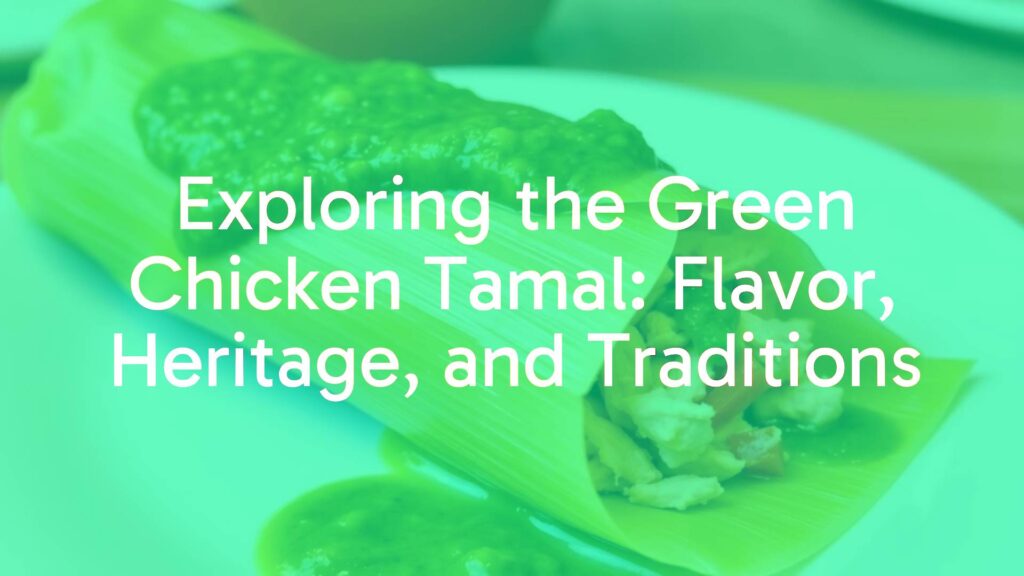Introduction to the Green Chicken Tamal
The green chicken tamal is a beloved variation of Mexico’s famed tamal tradition, celebrated for its vibrant color, zesty flavor, and comforting texture. Distinguished by its savory filling of chicken enveloped in a spicy green salsa, this tamal stands out among its many regional cousins for its accessibility and unique taste profile.
Signature Characteristics
Unlike other tamales that might feature red or mole sauces, the green chicken tamal is recognized by its light greenish hue, resulting from a sauce made predominantly with tomatillos, chiles, fresh herbs, and occasionally, pumpkin seeds. The outer layer is a soft, steamed masa (corn dough) that becomes tender yet mildly firm through its traditional cooking method. The filling boasts moist shredded chicken, thoroughly coated in tangy, herbal green salsa, often with subtle heat and aromatic undertones from ingredients such as cilantro and garlic. The combination yields a juicy, slightly spicy filling encased in a delicately flavored masa, all wrapped within either corn husks or banana leaves.
Historical Background and Cultural Significance
The origins of the green chicken tamal are deeply interwoven with the culinary history of central and southern Mexico, where tamales have been prepared for centuries. The use of green sauces, particularly tomatillo-based salsas, is a hallmark of Mexican gastronomy, signifying the fusion of pre-Hispanic cooking with Spanish-introduced chicken. The tamal itself is a symbol of celebration and communal tradition, often prepared in bulk for festive occasions, religious holidays, and family gatherings. In various regions, including Puebla, Veracruz, and the valleys around Mexico City, green chicken tamales have become a staple, each locality adding its unique touch to the recipe.
Primary Ingredients and Essential Elements
The essential components of a green chicken tamal include:
- Masa: Made from ground nixtamalized corn, mixed with lard or vegetable shortening for softness.
- Chicken: Typically shredded, providing a mild, tender base for absorbing the flavors of the salsa.
- Green Sauce: The core of this tamal’s identity, often using tomatillos, serrano or jalapeño peppers, onions, garlic, cilantro, and sometimes pepitas for body and nutty flavor.
- Wrapping: Usually corn husks, lending a subtle earthy aroma, though banana leaves are more common in southern adaptations.
Regional and Contemporary Variations
While the central style focuses on pure tomatillo and green chile salsa, variations abound throughout Mexico and the United States. Some cooks enrich the filling with cheese, chayote, roasted poblano strips, or even zucchini, adding layers of texture and flavor. In some regions, especially in the Yucatán or Oaxaca, banana leaves replace corn husks for a more pronounced herbal note. For those seeking lighter versions, vegetable oil can substitute for traditional lard, and turkey or tofu might stand in for chicken to accommodate dietary preferences.
Serving Suggestions and Pairings
Green chicken tamales are customarily consumed as breakfast or lunch fare, often accompanied by Mexican crema, crumbled queso fresco, or a side of fresh salsa. They pair beautifully with hot beverages such as atole, champurrado, or coffee. For festive occasions, tamales might be featured alongside pozole, refried beans, or pickled jalapeños. As a versatile dish, they can be enjoyed straight from their husks or unwrapped and topped with extra sauce and chopped fresh herbs.
Conclusion
The green chicken tamal epitomizes the culinary vibrancy of Mexico, melding vibrant flavors, tender textures, and centuries-old tradition into every bite. Whether served at bustling mercados or family breakfast tables, this tamal delights both seasoned enthusiasts and newcomers alike, standing as a testament to the enduring appeal of Mexican comfort food.

